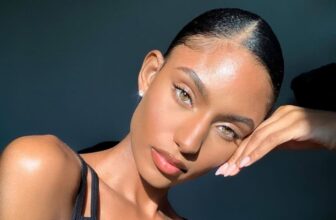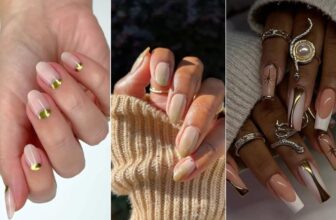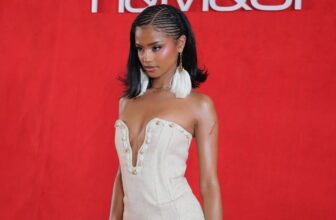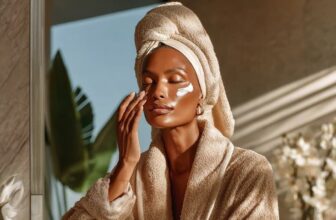The ongoing debate between body positivity and body neutrality in the fashion industry has sparked discussions around body image, self-acceptance, and inclusivity.
The conversation about body image has taken center stage in the ever-evolving fashion world, where trends shift with seasons and styles change in the blink of an eye. Fashion has traditionally been almost authoritarian in defining beauty standards, dictating what is “in” and who gets to wear it.
However, two major movements have emerged in recent years, seeking to challenge these rigid norms and advocate for a more inclusive and diverse industry: body positivity and body neutrality.
Both movements share the goal of breaking free from harmful body ideals, but they differ in their approaches and philosophies. Body positivity encourages individuals to love their bodies, irrespective of societal standards, while body neutrality advocates for the acceptance of bodies without emphasizing appearance.
As these movements continue to grow, they have sparked an important debate within the fashion industry: Should we celebrate body positivity or body neutrality in fashion, and which offers the most sustainable path forward?
Ahead, we’ll explore the origins and impacts of both movements, their influence on the fashion world, and the ongoing debate surrounding which of the two should be prioritized or celebrated.
By the end, you’ll have a clearer understanding of the key differences between body positivity and neutrality, and how each philosophy influences not only fashion but also society’s relationship with body image.
The Origins of Body Positivity
The body positivity movement has deep roots that can be traced back to the 1960s when marginalized groups began organizing to combat discrimination based on body size, race, and gender.
The rise of second-wave feminism played a significant role in fostering conversations around beauty standards and the objectification of women’s bodies. The movement gained further momentum in the 1990s with the rise of the fat acceptance movement, which aimed to dismantle the negative stereotypes and stigma associated with larger bodies.
However, body positivity as we know it today didn’t fully take shape until the advent of social media. Platforms like Instagram, Twitter, and Facebook gave individuals, particularly women, the opportunity to challenge mainstream beauty ideals by showcasing diverse body types and celebrating bodies of all shapes and sizes.
This democratization of beauty standards became the cornerstone of body positivity, empowering individuals to reclaim their self-worth from an industry that often promotes unattainable ideals.
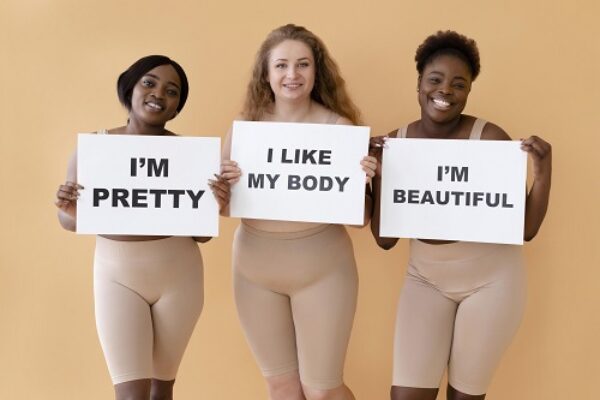 Photo credit: Freepik
Photo credit: Freepik At its core, body positivity seeks to foster self-love and acceptance for all bodies, regardless of size, shape, color, or ability. It challenges the notion that only thin, white, able-bodied individuals can be considered beautiful, and instead celebrates the diversity of human bodies in all their forms.
The Core Principles of Body Positivity
Self-love and acceptance:
Body positivity encourages individuals to not only accept but also love their bodies, irrespective of how they compare to societal standards. The movement advocates for a shift in mindset where people appreciate their bodies for what they can do rather than solely for how they look.
Challenging beauty standards:
One of the central tenets of body positivity is the rejection of narrow beauty ideals that privilege certain body types over others. It seeks to dismantle harmful stereotypes that associate beauty with thinness, youth, and whiteness.
Representation and inclusion:
Body positivity emphasizes the importance of representation in media, fashion, and popular culture. It demands that all body types, especially those that have historically been excluded or stigmatized, be visible and celebrated in fashion campaigns, runways, and advertisements.
Empowerment:
By encouraging individuals to embrace their bodies, body positivity empowers people to feel confident and worthy, regardless of societal pressures to conform to unrealistic standards. It fosters a sense of pride in one’s body and individuality.
The Role of Body Positivity in Fashion
In the fashion industry, body positivity has had a profound impact on the way brands approach size inclusivity and representation. For decades, high fashion was dominated by a singular body type—thin, tall, and white.
Plus-sized models were virtually non-existent on runways, and clothing options for people outside the narrow standard of beauty were limited to a few brands that often catered more to function than fashion.
The body positivity movement forced the fashion industry to reckon with its exclusionary practices. Many brands began to realize that consumers were demanding more representation and diversity in their campaigns, and this led to a slow but noticeable shift toward inclusivity.
Today, there is an increasing number of fashion brands offering extended sizes and featuring models of various body types, races, and abilities.
Campaigns like Dove’s “Real Beauty” and the rise of plus-size models like Ashley Graham, Paloma Elsesser, and Tess Holliday have played a crucial role in pushing the boundaries of body representation in fashion. Social media influencers who embrace body positivity have used their platforms to challenge traditional fashion standards and promote a more inclusive industry.
Despite these gains, critics argue that body positivity is not without its flaws. Some believe that the movement places too much emphasis on loving one’s body and can inadvertently pressure individuals to feel good about their appearance all the time—a goal that can feel unattainable or unrealistic, especially for those who struggle with body image issues.
The Rise of Body Neutrality
Body neutrality emerged as a response to some of the perceived limitations of the body positivity movement. While body positivity promotes the idea of loving and celebrating your body, body neutrality takes a different approach by advocating for a more neutral stance toward one’s physical appearance.
The core message of body neutrality is simple: You don’t have to love your body, but you can accept it as it is without placing so much importance on how it looks.
This movement encourages individuals to shift their focus away from their bodies and appearance and instead emphasize the functionality and health of their bodies. In other words, body neutrality promotes the idea that your body is just one aspect of who you are, and it doesn’t define your worth or value.
Core Principles of Body Neutrality
Body functionality over appearance:
Body neutrality emphasizes that our bodies are primarily tools that allow us to experience life, rather than objects that need to look a certain way. The focus is on what the body can do—whether it’s walking, running, breathing, or simply getting through the day.
Emotional neutrality:
Body neutrality encourages individuals to adopt a more neutral emotional stance toward their bodies. Instead of striving for constant body love, the movement acknowledges that it’s okay to have neutral or even negative feelings about your body from time to time.
Detaching self-worth from appearance:
A key tenet of body neutrality is the belief that self-worth should not be tied to physical appearance. The movement advocates for finding value in aspects of oneself that are not related to looks, such as personality, intelligence, creativity, and kindness.
Reducing the pressure to look a certain way:
Body neutrality seeks to alleviate the pressure to conform to beauty standards, whether they are traditional or part of the body positivity movement. It allows individuals to exist in their bodies without feeling the need to constantly love or celebrate their appearance.
The Role of Body Neutrality in Fashion
The fashion industry has historically been hyper-focused on appearance, which makes body neutrality a radical concept for the industry.
While body positivity calls for greater representation of diverse body types, body neutrality challenges the entire notion that fashion should be so heavily focused on the body at all.
Instead of emphasizing appearance, body neutrality encourages fashion brands to focus on creating clothing that fits well, is comfortable, and is accessible to all body types, without placing so much importance on how a person looks in the clothing.
For some, body neutrality offers a more sustainable and less emotionally taxing approach to fashion. It removes the pressure to constantly feel positive about one’s appearance, and instead, shifts the focus to how clothing makes a person feel in terms of comfort and functionality.
This philosophy has led to a growing demand for inclusive sizing, gender-neutral fashion, and a reduced emphasis on the visual appeal of bodies in advertising and campaigns.
 Photo: Freepik
Photo: Freepik Brands that embrace body neutrality are less likely to use language that encourages consumers to “love their bodies” and more likely to focus on the practicality and functionality of their products.
For example, instead of using terms like “flattering” or “slimming,” body-neutral fashion brands may prioritize comfort, quality, and fit. These brands recognize that consumers don’t always need their clothing to enhance or transform their appearance; sometimes, they simply want clothing that makes them feel good without the need for external validation.
Body Positivity vs. Body Neutrality
Body positivity and body neutrality both aim to foster a healthier relationship with the body, yet they differ in their methods.
Body positivity emphasizes the importance of loving and celebrating one’s body, striving to dismantle harmful beauty standards, and promoting self-love, representation, and empowerment.
On the other hand, body neutrality encourages acceptance of the body without focusing on appearance. It advocates for a more detached view of physical looks, placing greater emphasis on functionality and overall well-being.
While body positivity calls for an active celebration of one’s body, body neutrality offers a more balanced, less appearance-driven approach. Both movements are valuable in their efforts to challenge conventional beauty norms, addressing different emotional needs and preferences.
Which Movement Should Fashion Celebrate?
The debate around whether the fashion industry should focus on body positivity or body neutrality is nuanced, with valid arguments on both sides. Each movement offers unique perspectives on body image and inclusivity, playing different but significant roles in challenging beauty standards.
The body positivity movement advocates for loving and celebrating one’s body, regardless of its size, shape, or perceived flaws. It fosters empowerment and self-love, encouraging people to embrace their bodies with confidence, which can have a positive impact on their overall mental well-being.
One of the key strengths of this movement is its push for increased representation of diverse body types in fashion, which helps challenge narrow, traditional beauty ideals. By showcasing a range of bodies, the fashion industry can promote inclusivity, allowing more people to see themselves reflected in media and fashion.
Body positivity also encourages a broader cultural shift, one where society values the beauty of diversity and promotes acceptance. The movement has been instrumental in breaking down stigmas attached to bodies that do not conform to mainstream standards, offering a platform for marginalized groups to feel seen and celebrated.
Body neutrality, on the other hand, offers a more detached and realistic approach. It does not focus on actively loving one’s body but rather accepting it without placing too much emphasis on appearance. This approach helps alleviate the pressure to constantly feel beautiful or to celebrate one’s looks.
By adopting a more neutral stance, individuals can develop a healthier and more functional relationship with their bodies, focusing on what their bodies can do rather than how they appear.
One advantage of body neutrality is that it validates all kinds of emotions about the body, including negative ones. It acknowledges that not everyone feels positive about their bodies all the time, which can lead to a more balanced and sustainable approach to self-image.
In fashion, this perspective encourages brands to create designs that prioritize comfort, practicality, and functionality over aesthetics, making fashion more accessible and inclusive for people of all body types.
Some advocates suggest that the fashion industry should not have to choose between body positivity and body neutrality. Instead, a combined approach might be the most effective way to foster a truly inclusive environment. Celebrating both movements would allow for a more comprehensive narrative around body image, where individuals are free to choose the philosophy that resonates with them.
This dual approach could encourage diverse stories and experiences within fashion, catering to a wider range of emotional and psychological needs.
Body positivity can continue to push for representation and the celebration of all bodies, while body neutrality can offer a space for people who prefer not to focus on their appearance. Together, they create a more holistic approach to fashion, allowing brands to meet consumer needs for both self-love and practical, comfortable clothing.
In conclusion, the fashion industry stands to benefit from incorporating both body positivity and body neutrality.
These movements challenge outdated beauty standards and create more inclusive spaces where people can feel empowered and accepted, regardless of how they view or feel about their bodies.
By embracing both, fashion brands can help foster a culture that is truly supportive of all body types and experiences.
Photo: Luis Alvarez
You May Also Like:
Why Every Makeup Lover Needs a Spoolie Brush
December 15, 2025Quick Makeup Tips for Last-Minute Holiday Events
December 8, 2025SKIMS Beauty Just Announced Senegalese Diarrha N’Diaye as its New Executive VP
November 4, 2025Who Gets to Be Called Naturally Beautiful?
October 26, 2025The Rise of Henna-Inspired Nail and Makeup Trends
October 9, 2025The Secrets to Building a Beauty Brand
September 29, 2025Kylie Jenner Celebrates 10 Years of Kylie Cosmetics in a Power Pantsuit
September 18, 2025How African Beauty Representation Has Changed Over Time
September 18, 2025Kendall Jenner Breaks the Makeup Code: Revealing Her Secret to Big Lips
August 22, 2025Yemi Alade Reveals The First Makeup Products From Her Beauty Brand
August 18, 202510 South African Beauty Brands That Deserve a Spot in Your Routine
August 16, 2025Yemi Alade is Launching Her Own Beauty Line -YemBeauty
August 8, 2025Esther Ejoh is a Fashion Editor at Fashion Police Nigeria, where she writes all things fashion, beauty, and celebrity style, with a sharp eye and an even sharper pen. She’s the girl who’ll break down a Met Gala look one minute, rave about a Nigerian beauty brand the next, and still find time to binge a movie or get lost in a novel. Style, storytelling, and self-care? That’s her holy trinity.


